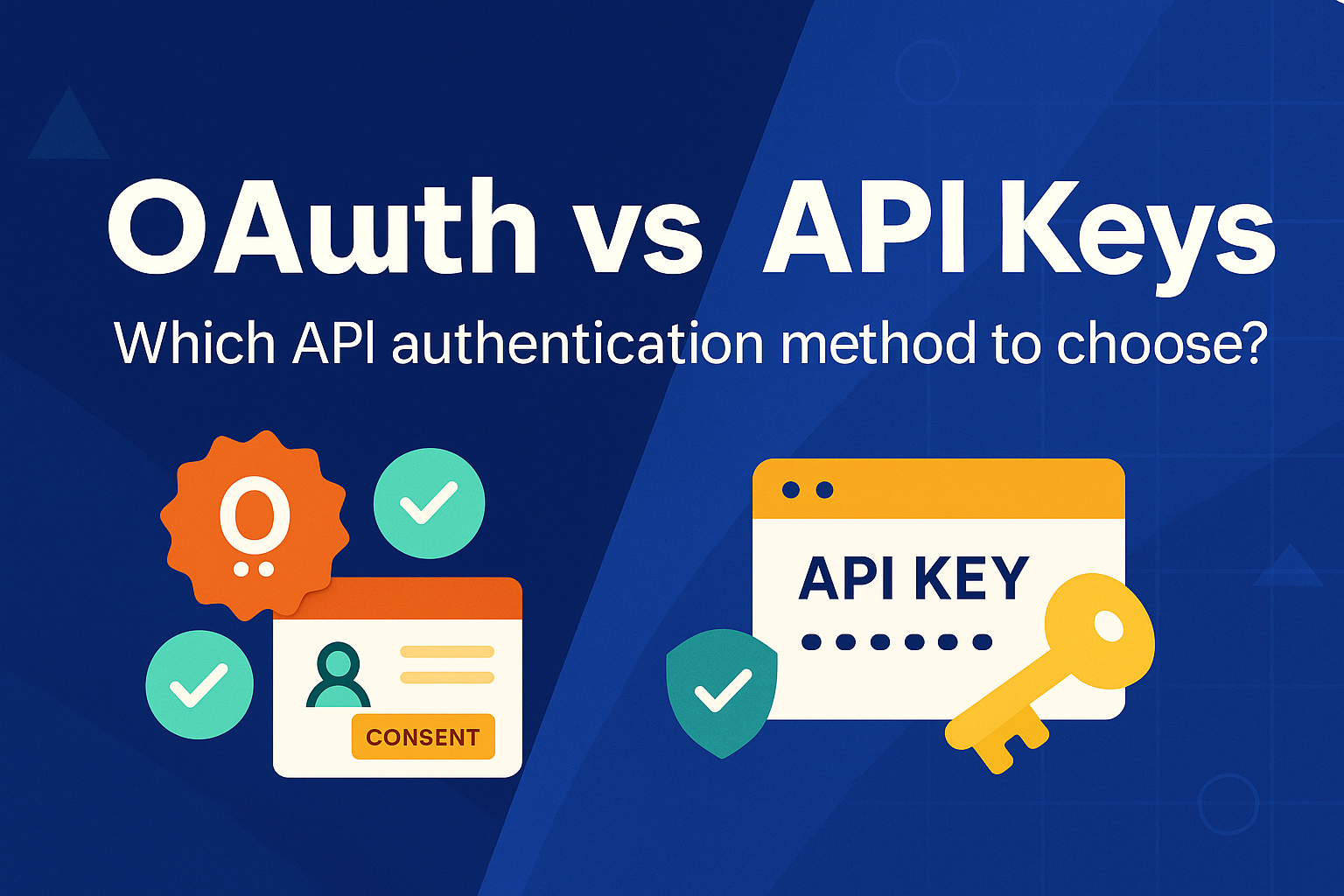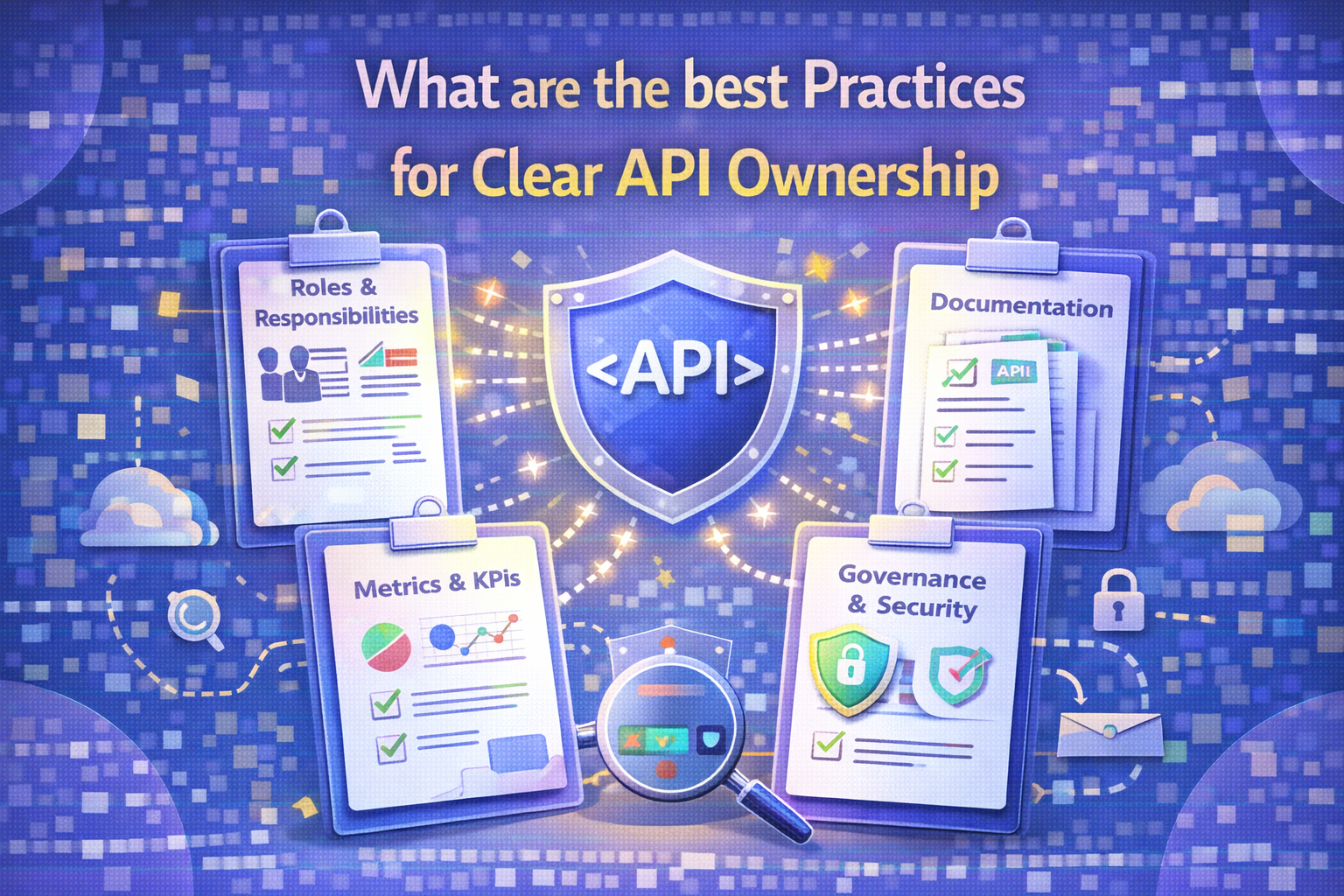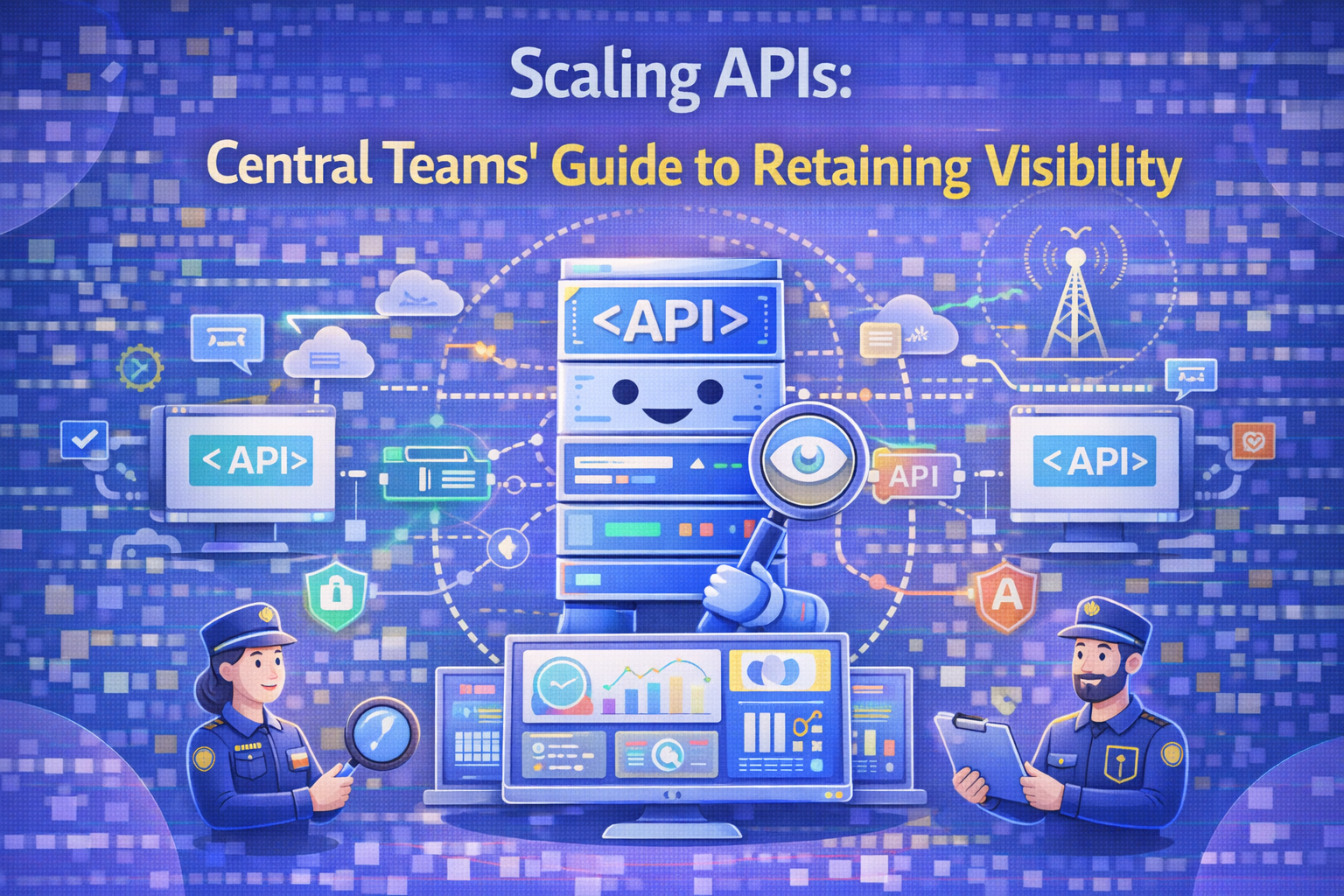
A weak API authentication choice can open the door to data leaks, broken integrations, and compliance headaches. Yet many teams still default to whatever their gateway supports by default, often without weighing the trade-offs.
In practice, two methods dominate: API keys, a straightforward way to identify and authorise requests, and OAuth, a protocol designed for delegated, user-consented access across systems.
The right choice depends on more than security; it shapes how easily developers integrate, how well you control access, and how future-proof your APIs are. This guide goes beyond surface-level comparisons to show how each works, where they excel, and the real-world scenarios where one clearly outperforms the other.
What are API keys? (With example)
API keys are unique identifiers, usually long alphanumeric strings, that a client includes in each request to an API. They serve as a simple way to authenticate the calling application and track its usage. Unlike more complex protocols, API keys don’t require an elaborate handshake or token exchange. The server checks the key against its records, and if valid, processes the request.
API keys are lightweight and easy to implement, which makes them a popular choice for internal services, quick prototypes, or low-risk public APIs. They can also be used to enforce rate limits, monitor traffic, and revoke access if needed. However, because they’re often static and sent in plaintext over the network (unless HTTPS is enforced), they’re more vulnerable to theft and misuse.
Example:
A weather service might issue developers an API key when they register. Every request to https://api.weatherdata.com/v1/forecast must include ?apikey=12345XYZ. The API server verifies this key, logs the usage, and returns the weather data. If the key is compromised or exceeds its rate limit, the service can revoke it instantly.
What is the OAuth authentication method? (With example)
OAuth is an open standard for secure, delegated access. Instead of sharing a password or static token, OAuth lets an application request access to a user’s resources on another system, with the user’s explicit consent, without exposing their credentials. OAuth 2.0, the most widely adopted version, works by issuing short-lived access tokens that the client uses to call APIs. These tokens can be scoped (limiting what the app can do) and refreshed without re-authenticating the user.
OAuth is ideal for scenarios where multiple systems need to interact securely on behalf of a user, such as social logins, payment authorisations, or third-party integrations. It supports fine-grained permissions, token expiration, and revocation, making it more secure than static credentials.
Example:
When you sign in to a photo-printing app using Google Photos, you’re taken to a Google consent screen. You approve access to your photo library. Google then issues the app an OAuth access token. The app uses this token to fetch your photos, but it can’t access your Gmail, Drive, or other unrelated data because the token’s scope is limited.
API keys vs OAuth: Key differences at a glance
While both API keys and OAuth authenticate API requests, they differ significantly in purpose, security, and complexity. API keys offer a quick, lightweight way to identify requests, while OAuth provides robust, delegated access with fine-grained control. Here’s a side-by-side breakdown:
When should you choose OAuth over API keys?
OAuth is the preferred authentication method when you need more than just a simple identifier. It excels in situations where security, delegated permissions, and user consent are critical. Here are the top scenarios where OAuth outperforms API keys:
1. Third-party application integrations
When you allow an external app to access user data in your platform, OAuth ensures the user never shares their password or static credentials. Instead, the user authorises the app via a secure consent screen, and the app receives a scoped, temporary token. This prevents long-term exposure of sensitive credentials while enabling safe integrations.
2. Fine-grained permissions
OAuth supports defining exact scopes for each token. For example, “read-only access to profile data” or “permission to post content but not delete it.” This level of control is not possible with API keys, which typically grant all-or-nothing access, making OAuth better for managing risk.
3. User consent workflows
If your API requires end-user data, OAuth allows you to integrate a consent step where the user sees exactly what data will be accessed and approves it. This improves transparency, reduces liability, and helps users feel in control of their information.
4. Compliance with data protection laws
Regulations like GDPR, CCPA, and PSD2 demand explicit consent and the ability to limit data access. OAuth inherently supports these requirements through consent flows, token expiration, and scope-based access, making compliance easier without custom security workarounds.
5. Temporary access needs
OAuth tokens are time-bound, often expiring within minutes or hours. This limits the window of opportunity if a token is intercepted. Static API keys, in contrast, remain valid until manually revoked, increasing risk in compromised environments.
6. Multi-service orchestration
In modern architectures, one service often calls multiple APIs on behalf of a user. OAuth supports token delegation, allowing services to securely pass along the necessary permissions without asking the user to log in repeatedly or share long-lived credentials.
7. Revocable access
With OAuth, a single token can be revoked instantly without affecting other sessions or integrations. This means you can cut off a compromised app or user session quickly, without disrupting unrelated systems that still need access.
When are API keys still useful for API security?
Despite their simplicity, API keys remain a practical authentication method in many scenarios. They work well where speed, ease of integration, and low overhead are more important than complex security controls. Here are the top use cases where API keys are still a strong fit:
- Internal or backend-to-backend services: For APIs used exclusively within your own infrastructure, API keys offer a lightweight way to control access. When traffic is secured over HTTPS and the environment is trusted, the simplicity of API keys avoids the overhead of a full OAuth flow.
- Low-risk, public data APIs: If your API serves non-sensitive data, for example, public product listings or read-only content, API keys can prevent anonymous abuse without adding unnecessary complexity for developers.
- Rapid prototyping and MVPs: In early-stage development, speed matters. API keys let you stand up authentication quickly so you can test API endpoints, onboard early users, and gather feedback without investing in a complex token infrastructure.
- Rate limiting and traffic analytics: Because each request includes a unique key, API keys make it easy to monitor usage patterns, enforce request quotas, and analyse traffic without maintaining user sessions or tokens.
- Service-level authentication: When the API needs to verify which application is calling (rather than which end-user), API keys provide a straightforward way to tie requests to a specific client, enabling application-level access controls.
- Integrations with simple or legacy systems: Some older systems or lightweight clients can’t handle multi-step OAuth flows. API keys offer a simpler handshake, ensuring compatibility while still allowing you to rotate keys periodically for security.
Modern alternatives and complementary methods to OAuth and API Keys
While OAuth and API keys remain the most widely used API authentication methods, they are no longer the only options. New standards and complementary mechanisms have emerged to address specific security, performance, and interoperability needs. Here are the top alternatives worth considering:
1. JSON Web Tokens (JWT)
JWTs are self-contained tokens that carry authentication claims and can be verified without a database lookup. They are compact, stateless, and ideal for distributed systems where performance matters. Often used alongside OAuth as access tokens, they reduce server load while maintaining strong security.
2. Mutual TLS (mTLS)
mTLS authenticates both the client and server using digital certificates. It’s particularly effective for high-trust environments like banking APIs or partner integrations, where both parties need to verify identity at the connection level before any request is processed.
3. HMAC (Hash-Based Message Authentication Code)
HMAC adds integrity verification to API requests by hashing the payload with a shared secret. This ensures that the message hasn’t been altered in transit and is often used in payment gateways and webhook security.
4. API Gateway Token Exchange
Modern API gateways support internal token exchange, allowing one authentication method to be converted into another. For example, an API key can be exchanged for a short-lived OAuth token, combining simplicity with stronger security.
Final thoughts: Choosing the right API authentication method
There is no one-size-fits-all answer when it comes to API authentication. API keys remain a simple, efficient choice for low-risk, internal, or prototype use cases where quick implementation matters. OAuth, with its token-based and scope-driven design, offers stronger security, delegated access, and user consent, making it the go-to for third-party integrations and sensitive data exchange.
Modern alternatives like JWTs, mTLS, and HMAC can complement or replace these methods in specific contexts, especially when performance, compliance, or AI-readiness are priorities. The best approach often involves combining methods, aligning them with your API’s risk profile, and reviewing them regularly as threats evolve. Ultimately, the right authentication method is the one that balances security, complexity, and developer experience for your specific API ecosystem.
You’ve spent years battling your API problem. Give us 60 minutes to show you the solution.
.svg)

%20(1).png)




